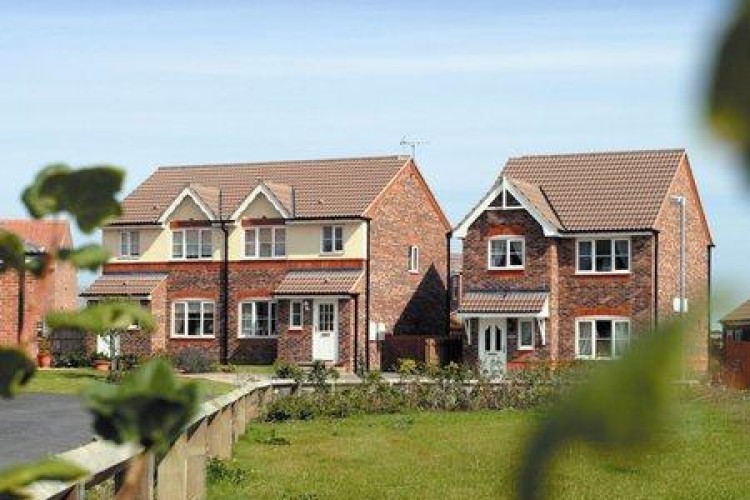Under the new regulations announced by the government today, CO2 emissions from new build homes will be around 30% lower than current standards and emissions from other new buildings, including offices and shops, will be reduced by 27%.
All new residential buildings, including homes, care homes, student accommodation and children’s homes, will have to be designed to reduce overheating. Improvements to ventilation will also be introduced to support the safety of residents in newly-built homes and to prevent the spread of air-borne viruses in new non-residential buildings.
The government described the changes as an important step towards a cleaner built environment, paving the way for the Future Homes and Buildings Standard in 2025, which will mean all future homes are net zero ready and will not need retrofitting.
The changes to the Building Regulations follow a public consultation and will come into effect from June 2022.
Alongside amendments to the Building Regulations, the Department for Levelling Up, Housing & Communities (DLUHC) has published five new approved documents:
- Approved Document L, volume 1: dwellings;
- Approved Document L, volume 2: buildings other than dwellings;
- Approved Document F, volume 1: dwellings;
- Approved Document F, volume 2: buildings other than dwellings;
- and an entirely new Approved Document O covering overheating.
There will be a six month period before the new regulations come into force on 15th June 2022. Transitional arrangements are in place that mean if a building notice, initial notice, or full plans for building work are submitted to a local authority before 15th June 2022, then provided the building work starts by 15th June 2023, work on that individual building is permitted to continue under the previous standards.
As well as setting out measures for the 2021 uplift to the Building Regulations, the Government response to the Future Buildings Standard (FBS) consultation also sets out plans for the implementation of the FBS from 2025. This includes plans to start a full technical consultation on the FBS in 2025.
Housing minister Eddie Hughes said: “Climate change is the greatest threat we face and we must act to protect our precious planet for future generations. The government is doing everything it can to deliver net zero and slashing CO2 emissions from homes and buildings is vital to achieving this commitment.

“The changes will significantly improve the energy efficiency of the buildings where we live, work and spend our free time and are an important step on our country’s journey towards a cleaner, greener built environment.”
Construction consultant Aecom provided strategic and technical support to DLUHC in its development of the changes to Part L (conservation of fuel and power) and Part F (ventilation) of the Building Regulations and the introduction of Part O (overheating).
Aecom director David Ross said: “New buildings have been set an improved performance standard which will make them more energy efficient through better insulation, better performing windows and more efficient building services. The new regulations should also encourage the early adoption of low carbon heat by presenting a roadmap for its implementation in new buildings and they are also more favourable to low carbon heat sources such as heat pumps. Standards have also been raised to reduce energy use and carbon emissions when carrying out works to existing properties such as retrofitting or extending the building.
“These new regulations will have significant impact on the industry and the day-to-day decisions developers make about building design and specification. They should be seen as a stepping stone to the 2025 Future Homes and Buildings Standard and are an important milestone in the built environment sector’s journey to net zero emissions.”
The Chartered Institution of Building Services Engineers (CIBS) approves of the regulations. Technical director Hwyel Davies said: “It is encouraging that for the 2021 uplift, DHLUC adopted the most ambitious option within those in the consultation. CIBSE welcome new requirements for energy performance modelling and overheating risk assessments, which should help deliver better building performance outcomes. We are also pleased to see the renewed commitment that the Future Homes / Buildings standard will ensure new buildings do not need retrofit for Net Zero. We look forward to working with DHLUC on this, and on the next uplifts for works to existing buildings, since retrofitting our existing stock is essential to deliver Net Zero as well as healthy and comfortable buildings.”
Rico Wojtulewicz, head of housing and planning at the House Builders Association (HBA), said: “To deliver electric car charging points, builders will be required to invest in the grid, rather than just charging infrastructure on their development sites. We cannot fathom why developers and builders are paying for offsite grid upgrades such as substations, cabling and transformers, when the move away from gas and on to electricity will see energy companies profiting in perpetuity.
“We have been bringing this issue up for several years, but our questions have fallen on deaf ears. As well as speaking to ministers and civil servants about this, we will be asking Ofgem to ensure that the grid operators detail the upgrade costs attributed to investment such as EV charging, so that the full impact of this new tax can be understood.”
Got a story? Email news@theconstructionindex.co.uk



